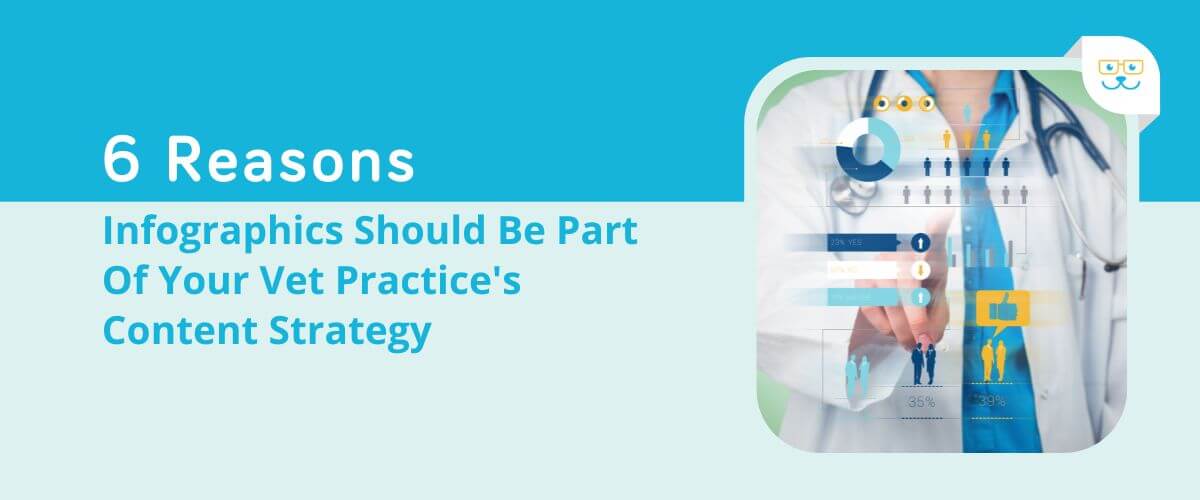6 Reasons Infographics Should Be Part Of Your Vet Practice's Content Strategy
Authored By: Jake Byrnes, Director of Optimization
It is no secret that highly visual content is one of the best ways to capture your followers' attention. In fact, according to research, social media posts that feature infographics generate 3 times more engagement than plain text posts. There are many applications of infographics with a veterinary practice and many benefits stemming from using infographics in your online marketing efforts. This article will explore six reasons you should consider creating infographics and how to use them in marketing your practice.
1. People process visuals better than text
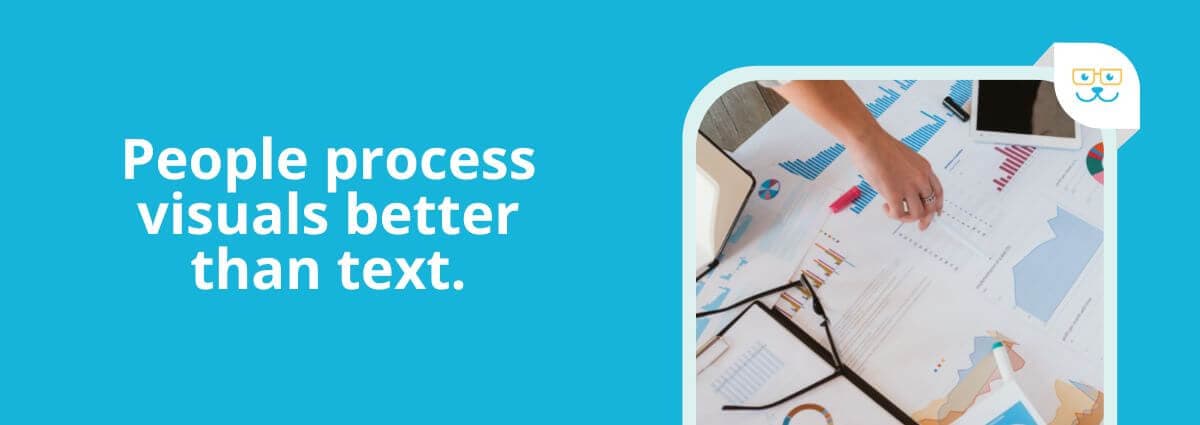
Studies show that “visualization works from a human perspective because we respond to and process visual data better than any other data type. In fact, the human brain processes images 60,000 times faster than text, and 90 percent of information transmitted to the brain is visual. Since we are visual by nature, we can use this skill to enhance data processing and organizational effectiveness.”
Therefore, if you want your marketing messages to resonate with your audience, it would be wise to utilize visual elements. By more effectively educating your audience, you should notice increased compliance with your recommendations among clients.
2. Infographics help drive website traffic
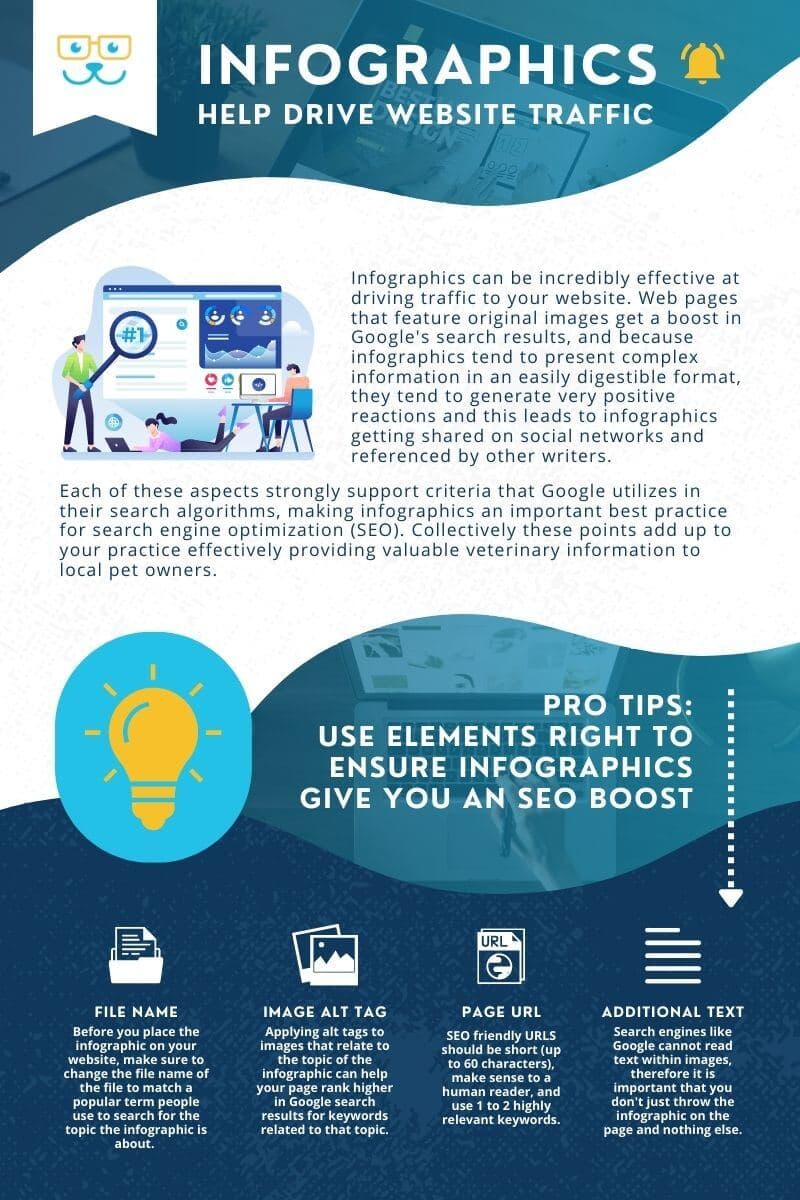
Infographics can be incredibly effective at driving traffic to your website. Web pages that feature original images get a boost in Google’s search results. Because infographics tend to present complex information in an easily digestible format, they tend to generate very positive reactions, leading to infographics being shared on social networks and referenced by other writers. Each aspect strongly supports Google's criteria in its search algorithms, making infographics a critical best practice for search engine optimization (SEO). Collectively these points add up to your practice effectively providing valuable veterinary information to local pet owners.
Pro Tips: Use Elements Right To Ensure Infographics Give You An SEO Boost
- File Name – Before you place the infographic on your website, make sure to change the file name of the file to match a popular term people use to search for the topic the infographic is about. For example, if the infographic is about Flea & Tick prevention, name the file something that people might commonly type into Google when looking for information on the subject, such as: “how to prevent fleas and ticks.” Google looks at image file names when determining what the page is about. Google then uses that information when deciding what to show Google users in relation to the term they have searched. File names closely relating to the search term will be shown not only in the web results of a search engine but also in the image results.
- Image Alt Tag – An alt tag, also known as "alt attribute" or "alt description," is an HTML element applied to an image that provides information about the image. Since image alt tags are used as a ranking factor in Google’s algorithm, applying alt tags to images that relate to the infographic topic can help your page rank higher in Google search results for keywords related to that topic.
- Page URL – According to research done by John Lincoln and Brian Dean, SEO-friendly URLs should be short (up to 60 characters), make sense to a human reader, and use 1 to 2 highly relevant keywords.
- Include Additional Text – Search engines like Google cannot read text within images; therefore, you mustn’t just throw the infographic on the page and nothing else. Make sure to include a complete written explanation of the information contained within the infographic, what inspired it, and why it is essential to the reader… and, as always, make sure to include a call-to-action or two, encouraging your reader to contact your office to schedule an appointment!
3. Infographics on Pinterest drive website traffic
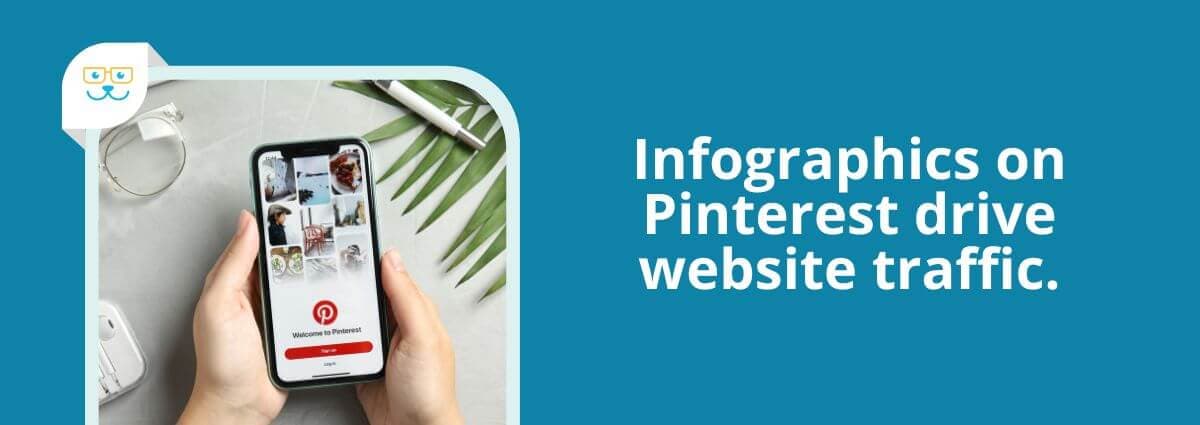
Compared to all social media platforms, Pinterest is best formatted for sharing infographics. Therefore, Pinterest users are very welcoming of infographics as a means to learn something new. Also, Pinterest is the second-largest driver of website traffic out of all social media platforms. According to Mashable, “When it comes to referral traffic from social networks, there’s Facebook and Pinterest – and then there’s everyone else.”
When uploading an image to Pinterest, you can add a link to the image. We recommend creating a simple infographic for every blog post you publish on your website. When you upload the pin, link it back to the blog and entice users to visit your website for more detailed information. Pinterest search features also function much like Google, so title your pin the same way you would a blog. Also, use terms and keywords in your post copy that you think pet owners may be searching for.
If you’re already a GeniusVets client, check in with our Client Success team if you need help with any of these optimization techniques!
4. Infographics get shared

People like to share posts for many reasons, and they will definitely share posts that they think will be helpful to their friends and family. The more visually appealing a post is, the more likely it is that people will want to share it. In fact, infographics get shared on social media 3x more than any other type of visual content (source).
Maybe it’s comments and shares on Facebook or the use of your branded hashtags on Instagram. On Pinterest, users “share” your infographic by simply pinning it on one of their boards. You can also encourage shares from your website by adding a Pinterest pin button. All of those platforms can spread your recommendations and expertise (as well as your logo!) to help bond existing clients and attract potential new clients.
5. Infographics show your expertise

No doubt you are an expert in the field of veterinary medicine. Infographics help to display your area of expertise tangibly. When clients and prospective clients see educational content published by your practice via a branded infographic, they will see you as more of an authority on all things animal health. With so many (sometimes ill-informed) digital resources, clients must turn to you as a trusted resource.
6. Infographics educate and drive sales
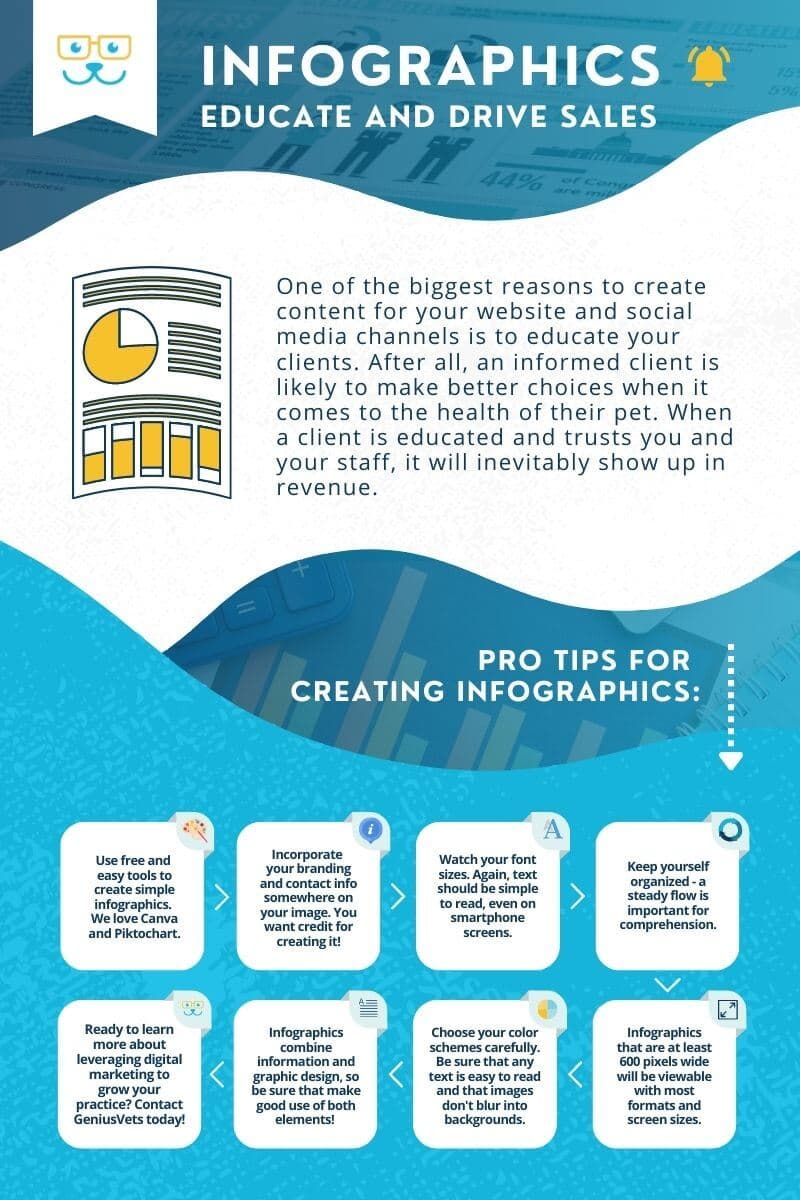
One of the biggest reasons to create content for your website and social media channels is to educate your clients. After all, an informed client is likely to make better choices when it comes to their pet's health. When a client is educated and trusts you and your staff, it will inevitably show up in revenue.
Tips for creating infographics
Check out our GeniusTips for creating your own infographics:
- Use free and easy tools to create simple infographics. We love Canva and Piktochart.
- Infographic images sizing
- Blogs and general website: 600 pixels x 1800 (max) pixels.
- Pinterest: 600 pixels x whatever you would like. Pinterest has no size limit!
- Facebook: 404 pixels x 403 pixels minimum, and 2048 px x 2048 px maximum.
- Infographics that are at least 600 pixels wide will be viewable in most formats and screen sizes.
- Incorporate your branding and contact info somewhere on your image. You want credit for creating it!
- Choose your color schemes carefully. Stick with your branding, but be sure that any text is easy to read and images don’t blur into backgrounds.
- Watch your font sizes. Again, the text should be simple to read, even on smartphone screens.
- Infographics combine information and graphic design, so make good use of both elements! Use enough explanatory text, then include photos or illustrations that enhance that information and demonstrate your points.
- Keep yourself organized. Does it make sense for you to create one large block of an image and text points? Or will it be easier for you to create separate content blocks within one infographic? Flow and organization are essential for comprehension.
Ready to learn more about leveraging digital marketing to grow your practice? Schedule a demo with GeniusVets today!

